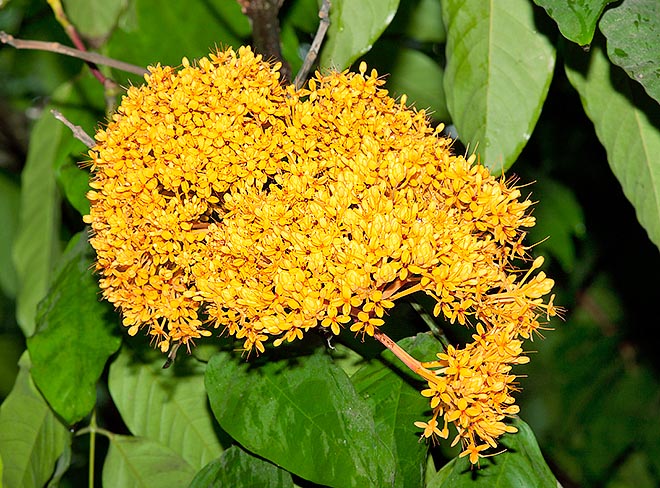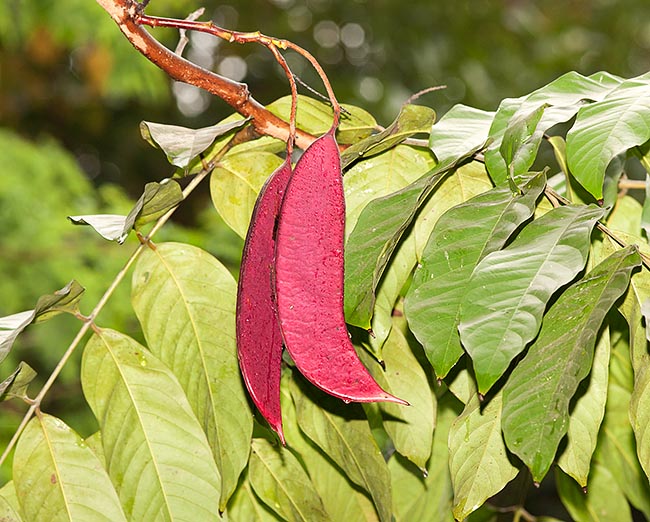Family : Fabaceae

Text © Pietro Puccio

English translation by Mario Beltramini

Saraca thaipingensis is an about 8 m tropical tree with changing yellow inflorescences © Giuseppe Mazza
The origin of the name of the genus is uncertain, most probably it is coming from a local name.
The name of the species refers to one of its origin places, Taiping in Malaysia.
Common names: yellow ashoka, yellow saraca (English); sáraca-tangerina (Portuguese-Brazil).
The Saraca thaipingensis Cantley ex Prain (1897) is a small evergreen tree tall up to about 8 m with alternate even-pinnate leaves formed by 4-8 pairs of lanceolate leaflets with long pointed apex, 8-25 cm long and 4-9 cm broad, of bright green colour.
The young leaves are initially tender, of cream, pink or purple colour, grouped and hanging.
Numerous inflorescences, sessile, thick, on stem and branches (cauliflory), up to about 40 cm broad, with flowers of about 2 cm of diameter, without petals, formed by the calyx, on a thin floral tube 1,2-2,5 cm long, formed apparently by 4 petaloideous sepals, being the two rear ones merged, of ovate-lanceolate shape, of colour initially pale yellow then becoming intense yellow with red centre, and 5-7 reddish stamina.

The 20-4 cm long fruits reveal the belonging to Leguminosae family. Medicinal virtues © Giuseppe Mazza
It is considered as standing among the most ornamental species of the tropical flora due to the huge inflorescences and the young leaves giving a touch of colour to the crown even when absent. It is exclusively cultivable in the tropical and subtropical climate zones, in a position sheltered from the wind. It requires preferably a slight shade, especially in the juvenile stage, and soils from slightly acidic to neutral, rich of organic substance, well drained and kept humid.
The flowers are used in the traditional medicine. Recent studies have brought to light interesting antioxidant and antimicrobic properties from the extracts of flowers, leaves and twigs of potential interest in medicine.
→ To appreciate the biodiversity within the family of FABACEAE please click here.
